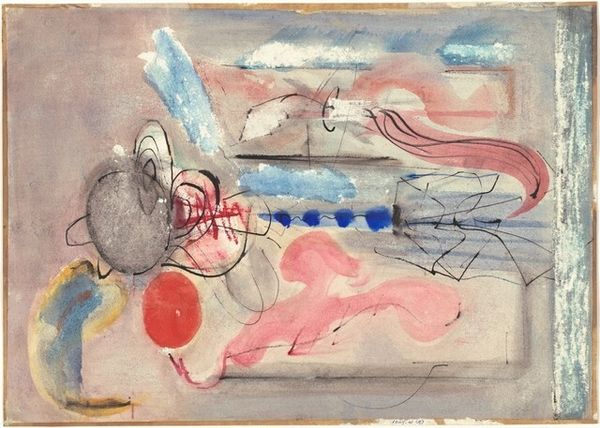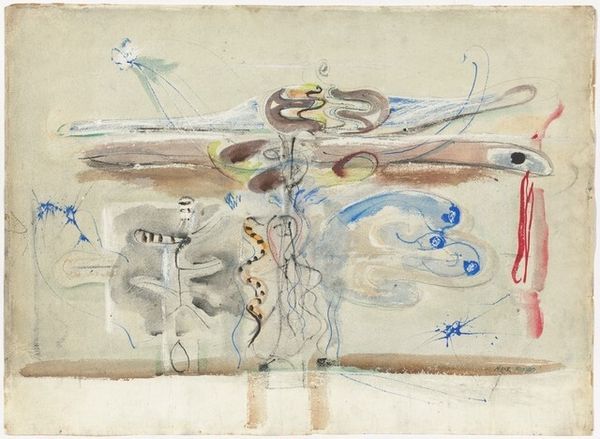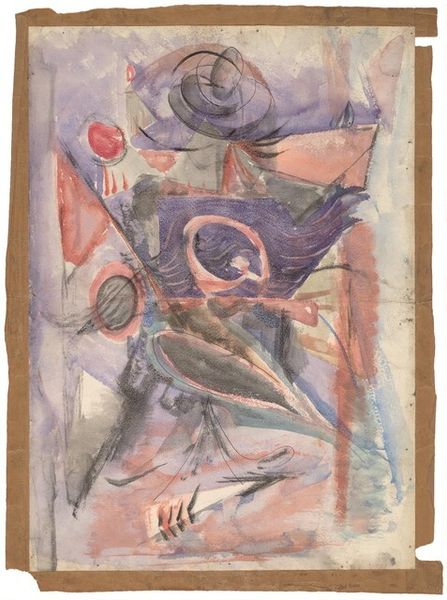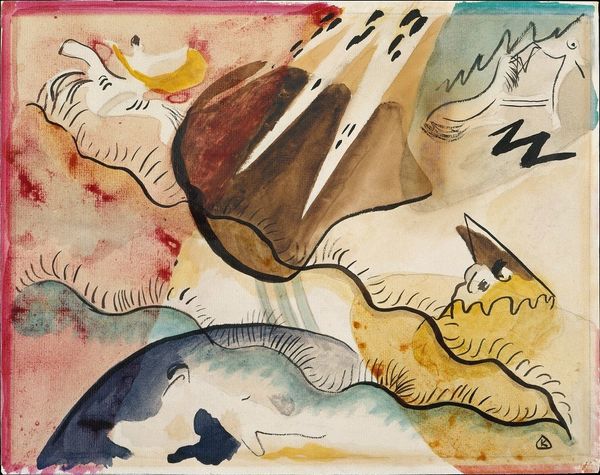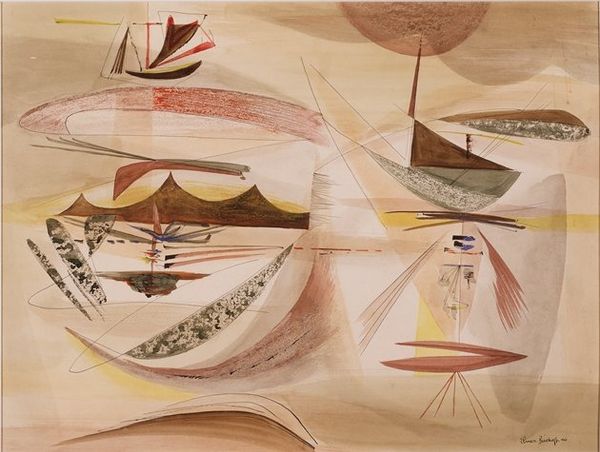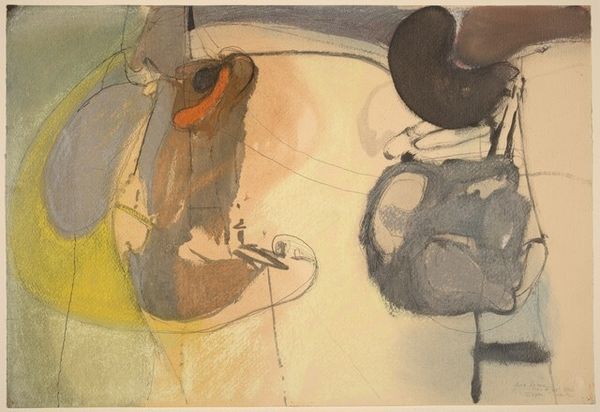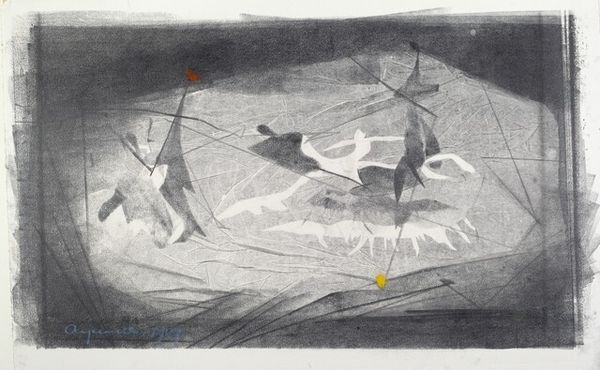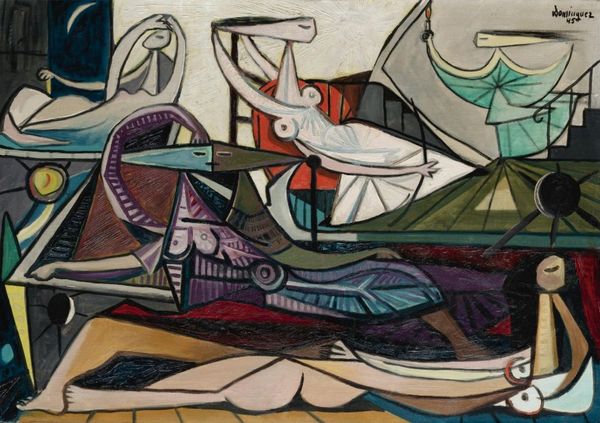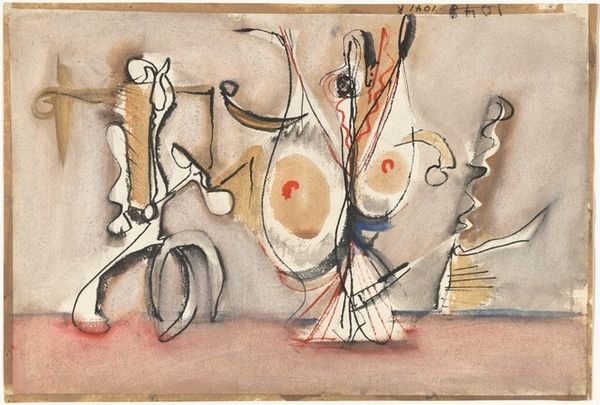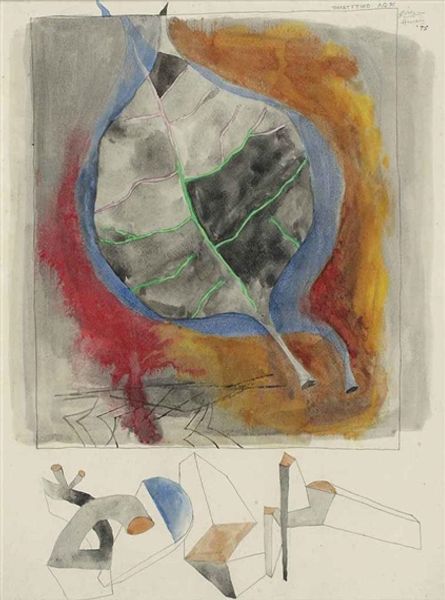![Abstract Composition [verso] by Mark Rothko](/_next/image?url=https%3A%2F%2Fd2w8kbdekdi1gv.cloudfront.net%2FeyJidWNrZXQiOiAiYXJ0ZXJhLWltYWdlcy1idWNrZXQiLCAia2V5IjogImFydHdvcmtzLzY4M2Y1ZTkxLWRhMGEtNGIxOC05ZjNjLTlmMDU0OGQ3NzAwMS82ODNmNWU5MS1kYTBhLTRiMTgtOWYzYy05ZjA1NDhkNzcwMDFfZnVsbC5qcGciLCAiZWRpdHMiOiB7InJlc2l6ZSI6IHsid2lkdGgiOiAxOTIwLCAiaGVpZ2h0IjogMTkyMCwgImZpdCI6ICJpbnNpZGUifX19&w=1920&q=75)
Dimensions: overall: 38.1 x 53.4 cm (15 x 21 in.)
Copyright: National Gallery of Art: CC0 1.0
Editor: This is "Abstract Composition" by Mark Rothko, from around 1944. It's a mixed media piece, including watercolor, and has such a strange sense of depth, or maybe it's a lack of it that makes it striking. What do you see in this piece? Curator: Immediately, I'm drawn to the apparent tension between order and chaos, so prevalent during that era. Rothko’s symbols—vaguely architectural, yet also biomorphic—seem caught between a crumbling past and an uncertain future. What kind of emotional resonance do you think these ambiguous forms are evoking? Editor: I get a sense of being unsettled; like recognizable objects have been scrambled. Is that typical of art from that period? Curator: The war years saw artists grappling with fractured realities, exploring new visual vocabularies to represent internal and external upheaval. Think of shattered mirrors, reassembling themselves, constantly changing form. Can you perceive any other underlying psychological themes at play? Editor: Perhaps the juxtaposition of pale washes with harsher black lines represents conflicting emotions? A struggle between hope and despair? Curator: Precisely! The color choices are seldom accidental. Note how the muddied greens and browns clash, fighting against the starkness. Do you feel this piece suggests a sense of resolve or continued struggle? Editor: More of a struggle, definitely. A search for something never quite found, maybe? Curator: It's interesting to consider how, even in abstraction, forms echo cultural anxieties. Reflecting on this piece has highlighted how the human spirit expresses, then attempts to resolve inner conflicts. Editor: It’s given me a new way to see the power within abstract art, recognizing coded language, embedded emotional concepts, and that even fragmented compositions communicate.
Comments
No comments
Be the first to comment and join the conversation on the ultimate creative platform.
